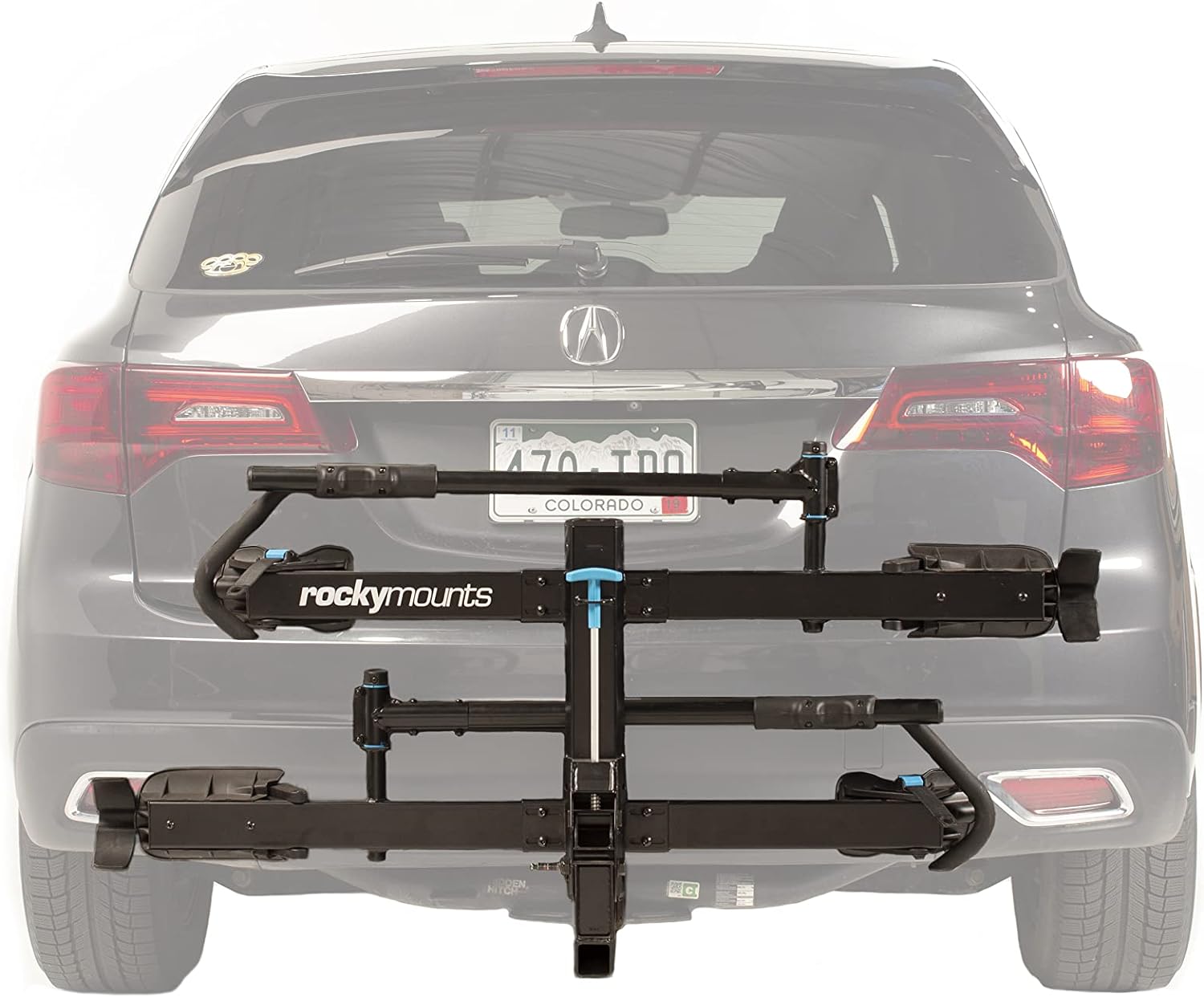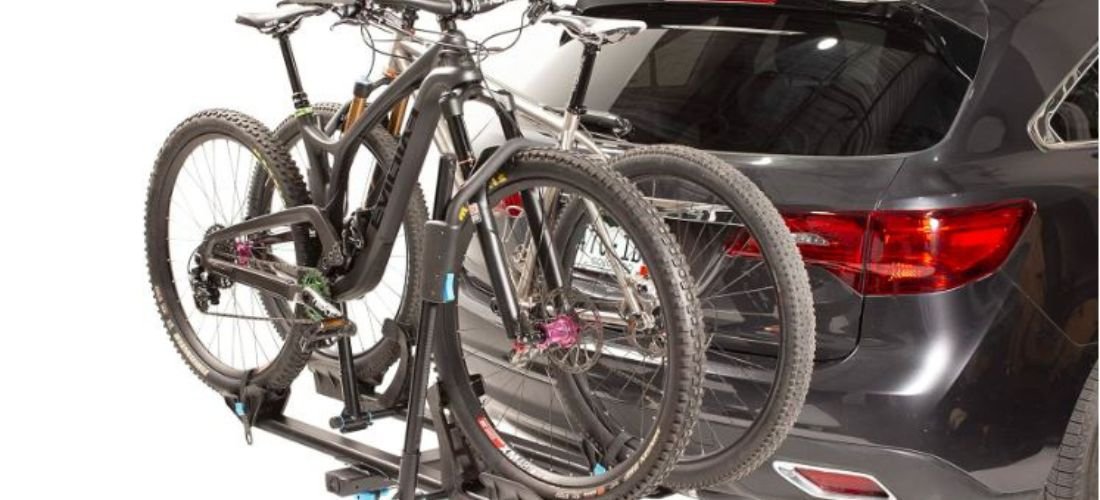As an avid cyclist and writer, I find a hitch bike rack indispensable for anyone who loves to ride in varied locations. But what is a hitch bike rack exactly, and why should you consider one? It’s a specialized device that attaches to your vehicle’s hitch, providing a secure and accessible way to carry bicycles. It’s not just about functionality; hitch bike rack features are designed to simplify your life, enabling you to focus on enjoying your cycling adventures. Perhaps one of the most crucial components to understanding how a hitch rack functions lies in the question, “What is a hitch on a bicycle?” A hitch is an engaging element, usually a receiver at the rear of your vehicle, where the rack is mounted. It’s the cornerstone of bike transportation.
Key Takeaways
- Hitch bike racks offer a secure method to transport bicycles with your vehicle.
- Understanding hitch bike rack features can enhance your biking experience.
- Knowing what a hitch on a bicycle or vehicle is is critical for proper rack attachment.
- Diverse hitch bike rack options cater to different vehicle types and cycling needs.
- Selecting the right hitch bike rack depends on your bike’s size, weight, and transportation frequency.
- Preparation is key; ensure your vehicle has a hitch installed for the rack.
- Investing in a hitch bike rack means more freedom to explore distant trails and roads.
Exploring Hitch Rack Basics
When considering bringing your bicycle along, understand what a hitch bike rack is. Is essential. As a devoted cyclist and writer, I’ll delve into the nuances of bike rack hitch mounts and how they can accommodate up to 3 bicycles or more, depending on the model.
Defining the Hitch Bike Rack
A hitch bike rack is an indispensable piece of equipment for transporting your bikes using a vehicle. It attaches to the hitch receiver at the rear, transforming your car, van, or SUV into a reliable bike carrier. In essence, a hitch-mounted rack is an extension of your vehicle, designed to transport bicycles to your desired destinations securely.
Types of Hitch Bike Racks and Compatibility
On the market, you’ll come across various hitch bike rack sizes and styles, such as platform racks that provide a sturdy base for your bikes, hanging racks that suspend your bikes, and wheel-only racks that support the bike by its wheels. The key is to select a size that fits the number of bikes you plan to transport and is compatible with your vehicle’s hitch. Safety and stability are paramount, and ensuring the proper match between your rack and the hitch size will prevent potential issues on the road.
The Pros and Cons of Using Hitch Bike Racks
Every cyclist seeking convenience must weigh the advantages and disadvantages of using a hitch bike rack. On the upside, these racks are user-friendly, often requiring limited lifting due to their low mounting point. They also reduce wind resistance, leading to better fuel efficiency, and boast an increased carrying capacity compared to other bike racks.
However, addressing potential cons, such as their extended length to your vehicle, is essential. This can affect parking and maneuverability. Depending on the model, a hitch-mounted rack may limit or obstruct access to your vehicle’s trunk or hatch, which calls for careful consideration before purchasing.
What is a Hitch Bike Rack? Understanding Its Functionality

When I explore the topic of a hitch on a bicycle, I delve into the realm where convenience meets ingenuity. A hitch bike rack is a specialized device that attaches to a hitch on a vehicle, providing a robust yet flexible way to transport your bikes securely. As I delve deeper into its features, the rationale behind its design becomes apparent. Its purpose is to offer peace of mind and security to cyclists who yearn to venture beyond their local trails.
In examining hitch bike racks, I’ve observed their crucial safety features, which often include padded arms to protect the bike’s frame, straps, and locking systems designed to hold the bike steady even on the bumpiest of roads. These features are more than just an accessory—they represent the collective innovation of the cycling and automotive industries.
One of the most compelling attributes of a hitch rack is its blend of stability and accessibility. Unlike roof-mounted racks, hitch racks keep your bikes easily reachable at all times, and they’re typically easier to load and unload, saving time and sparing you the struggle. This aspect mainly benefits those who frequently travel solo or with family and require a straightforward, user-friendly solution.
- Mounting System: A bike rack’s mounting system is straightforward: the rack inserts into the vehicle’s hitch receiver, and a bolt or locking pin secures it. Some racks also feature an anti-wobble system to prevent excessive movement.
- Safety and Security: Built-in locks and sturdy straps ensure bikes remain stationary during transit. Reflective elements can also be present for enhanced visibility during night-time travels.
- Versatility: Many hitch racks are designed to accommodate various bike types and sizes, with adjustable arms and wheel trays that can be fine-tuned for a custom fit.
Choosing the Right Hitch Bike Racks for Your Vehicle
When transporting your bikes, the right hitch rack can make all the difference. As someone who frequently hits the trails, I understand the importance of selecting a rack compatible with your vehicle that suits your cycling lifestyle. Let’s delve into the critical aspects of hitch rack sizes, features, and installation to ensure you make an informed decision.
Considering Hitch Rack Sizes and Weight Capacity
In my experience, the first step is to consider the size of the hitch rack you’ll need. There are varying hitch bike rack sizes to fit different vehicle models and accommodate a certain number of bikes, typically up to 5. The key is looking for a rack matching your car’s hitch receiver size and towing capacity. Remember, the goal is to transport your bikes safely without exceeding your vehicle’s weight limit.
- Assess your vehicle’s towing capacity.
- Decide on the number of bikes you need to carry, considering options are designed to hold up to 5 bikes securely.
- Choose the corresponding hitch rack size that offers a snug and secure fit.
Hitch Bike Racks Features and Accessories
Given the variety of hitch bike racks on the market, features can vary greatly and are essential to consider. Some racks incorporate anti-wobble technology to minimize movement during transit, while others come with built-in locks for added security. I always suggest looking for a rack that provides easy access to your vehicle’s trunk or hatch—it’s pretty convenient.
- Anti-wobble technology
- Built-in locks for security
- Tilt-down or swing-away designs for trunk access
Installation of a Hitch for a Bike Racks?
Whether you’re a DIY enthusiast or prefer to have a professional handle it, installing a bike rack is a crucial process. You must install one if your vehicle isn’t equipped with a hitch. Always check the bike rack’s compatibility with your hitch size and consult the vehicle’s manual or seek professional advice if you’re uncertain about the installation process.
- Ensure that your vehicle has the proper hitch installed.
- Follow the manufacturer’s instructions or a step-by-step guide for installation.
- If needed, get professional assistance to fit the rack securely.
Conclusion
Hitch bike racks are more than just accessories—they are essential companions for cyclists exploring new terrains and destinations. In this article, we have learned what hitch bike racks are, how they work, and their benefits and drawbacks. We have also seen the different types of hitch bike racks and how to choose the best one for your vehicle and needs. Whether you are looking for a simple, sturdy, or versatile rack, a hitch rack suits you, following the tips and advice in this article, you can make a wise and informed purchase to enhance your cycling experience. Hitch bike racks are the ultimate solution for safely, quickly, and efficiently transporting your bicycle.
FAQ
What is a hitch bike rack?
A hitch rack is a device designed to transport bicycles using a vehicle. It attaches to the hitch receiver at the rear of a car, van, or SUV, providing a secure and convenient way to carry bikes outside the vehicle.
What are the main features of hitch bike racks?
Key features of a hitch rack include ease of bike loading and unloading, versatility to fit various sizes and styles, a secure locking mechanism, and often a tilting or swinging function to allow for better vehicle rear access.
Are there different types of hitch racks?
Yes, there are various hitch bike racks, such as platform racks, hanging racks, and wheel-only racks, each offering different benefits regarding bike security, vehicle compatibility, and ease of use.
How do I choose the correct hitch rack size?
When choosing a hitch rack size, consider the number of bikes you want to transport, the total weight capacity with your vehicle’s towing limit, and ensure the rack’s hitch size matches your vehicle’s hitch receiver size for proper fit.
Do all vehicles come with a hitch for bike racks?
Not all vehicles come with a pre-installed hitch. If your car does not have one, you must install a hitch professionally before using a mounted bike rack.
Holding an MSC-IT from the University of Gujrat, I boast two years in website development, certifications in SEO, and graphic design from e-Rozgar, and an Amazon course completion. As “Fashion Vogue’s” owner and a seasoned freelancer on Upwork for three years, my expertise spans IT, digital marketing, and e-commerce.

